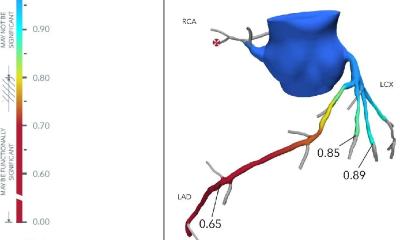Telehealth interventions help cardiac patients
The use of phone and internet between patients and healthcare providers is an effective way to reduce risk factors for coronary heart disease and the risk of further events after a heart attack, according to new research published in June issue of the European Journal of Cardiovascular Prevention & Rehabilitation.

The new study suggests that telehealth can provide an “innovative model” by which access is increased and the “diverse nature of people and communities accommodated”.
The study’s senior investigator, Professor Ben Freedman from the Department of Cardiology at Concord Repatriation General Hospital, Sydney, Australia, says that the provision of “telehealth” models could help increase the uptake of coronary prevention activities by those without access to cardiac rehabilitation, and “narrow the gap between evidence and practice”. That evidence has already shown that formal cardiac rehabilitation programmes consistently reduce the risk of further events (secondary prevention), improve personal risk factor profiles, encourage compliance with drug therapy, and enhance quality of life through exercise and education.
However, according to Professor Freedman, it is also known that only one-third of eligible patients participate in cardiac rehabilitation programmes in Europe, the USA and Australia.
The review analysed all published randomised trials evaluating a telephone or internet-based intervention whose end-points were a measure of mortality, changes in levels of multiple risk factors for heart disease, or quality of life.
Says the study’s lead author Lis Neubeck from Concord Repatriation General Hospital in Sydney: “We aimed to determine if, in a world increasingly dominated by electronic technology, interventions for preventing recurrent coronary disease could be delivered in innovative ways to enable more people to access effective secondary prevention. Our analysis, which involved more than 3000 patients across 11 studies, suggests that the electronic age is indeed providing effective alternatives for the delivery of preventive health change.”
The study defined telehealth prevention programmes as those which made at least 50 per cent of their patient contact through telephone or internet. However, total patient contact in the studies assessed varied in length – from just 40 minutes to nine hours. In more than half the studies a nurse delivered the intervention. The most common methods of contact were by telephone, and around half the trials supplemented new technology communication with written information. Only two of the 11 trials used an internet programme, which included progress graphs, online rewards and discussion groups with experts and other patients. No trials using other communication technologies – such as video conferencing – were found.
Results of the analysis showed that the telehealth interventions were associated with a 30 per cent lower mortality rate than non-intervention controls, but this was not statistically significant and reflected a real-life “absolute” risk reduction of 1 per cent. However, there were significant findings in the effect of telehealth on modifiable risk factors for coronary disease. Follow-up showed lower total cholesterol levels in the telehealth patients than in controls, lower levels of systolic blood pressure, and fewer people continuing to smoke. Favourable effects were also found in levels of physical activity and quality of life.
“People today are increasingly time-poor,” says Lis Neubeck, “and attendance at a centre-based programme for the secondary prevention of recurrent coronary events tends to limit access. Utilising electronic technologies has the potential to increase access for these services without compromising outcomes.
“It’s worth noting that three of the programmes we reviewed were from Australia. The CHOICE study, for example, showed that a brief flexible intervention provides effective risk factor reduction for 12 months following an acute heart event. Reaching people in rural and remote communities is a particular problem in Australia and these interventions have the potential to overcome barriers of time and distance, thus enabling us to reach populations with problems in accessing healthcare, at affordable cost.”
Neubeck L, Redfern J, Fernandez R, Briffa T, Bauman A, Freedman SB. Telehealth interventions for the secondary prevention of coronary heart disease: a systematic review. Eur J Cardiovasc Prev Rehabil 2009; 16; 281-289.
Image: Philips
17.06.2009









